Why IoT Gateway is Essential in Your IoT Projects?
The most critical piece of hardware you need for your IoT project is the smart gateway device because it is the centralized hub that links the end nodes (smart sensors and various devices) to the cloud. These devices allow bidirectional data flow between the two sides, realizing protocol conversion between the sensing network and the traditional communication network.
Smart gateways also create an additional security layer for the IoT network by providing encryption, firewalls, and anomaly detection capabilities, which is important for the internet-connected devices and the IoT system as a whole.
Before sending the data to the cloud, an IoT gateway also performs edge computing, which involves aggregating, filtering, clustering, and summarizing the data. This processing reduces the data flow to the cloud, enhances the response time to the end nodes, and lowers data transmission costs.
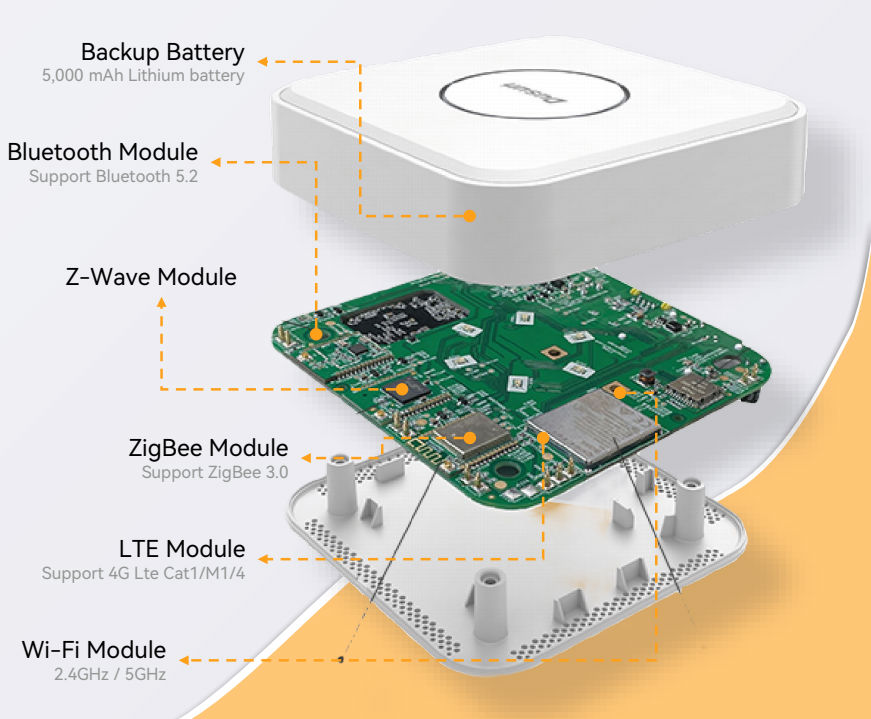
You can buy a ready-made gateway for your project, but this can have its limitations or a high price tag. A cheaper option would be to build your IoT gateway, and I’ll show you how to build one using a few development kits like single board computers, system on modules, wireless modules, and the like.
In the end, you should be able to make the decision of whether you want to buy or build this device for your business from my recommendation. Let’s get right into it!
IoT Gateway Development Kits You May Considered
You can build an IoT gateway using a single board computer, microcontroller dev board, or a system on module. The last two require wireless modules to connect to end nodes and network servers to become true gateways. Let’s look at each of these options to analyze their strengths and drawbacks.
Single Board Compiter (SBCs)
The most common single board computer in the market is the Raspberry Pi lineup but there are other varieties like BeagleBone and Nano Pi. These computers can run an operating system and have some connectivity interfaces like BLE, Wi-Fi (2.4 and 5GHz), and Gigabit ethernet ports.
Is Raspberry Pi an IoT Gateway?
You only have to install an OS on this computer (usually Linux-based), link it to the cloud, then use protocols like MQTT, CoAP, or HTTP to send the data from the sensors or smart devices (end nodes) to the cloud.
Application software like Node-RED and home assistant can help you control these end nodes by creating routines or rules that use sensor inputs to control actuators, lights, and other devices.
Although they are compact, affordable, and energy efficient, these computers have some shortcomings.
The major one is the limited connectivity. Let’s say you want to build an IoT gateway for a system that requires LoRaWAN wireless connectivity to the end nodes and cloud. You cannot use your Raspberry Pi computer the way it is; you need a LoRaWAN wireless module.
But I managed to find a workaround using the Dusun Pi DSGW-230, which has Zigbee, Matter, OpenThread, Bluetooth (5.2), Z-Wave, WiFi (2.4G and 5G), LTE, and two Gigabit ethernet ports. It’s something worth checking out.

Microcontroller Dev Boards with Wireless Modules
You can only use Arduino and other microcontroller dev boards to build gateways for small IoT environments because they are significantly less powerful than SBCs and don’t run operating systems. Additionally, these boards require wireless modules to get started. So even if the IoT system is running on BLE or Wi-Fi, you still have to do some soldering before getting started.
These development boards are more suitable for the end nodes in the IoT system. For instance, you can interface an Arduino UNO to a DHT11 temperature and humidity sensor, then use the board to send greenhouse or indoor farm moisture and temperature data to an SBC-based gateway, which then uploads it to the cloud.
SoMs with Wireless Modules
You might get confused when you see SOMs (System on Modules) and SBCs as separate in this categorization because they have some similarities. For instance, both can run operating systems and have RISC-based SoCs (usually ARM).
But the two are different. A SoM is like the core section of an SBC, which means it only packs the chipset and the core functions of an SBC. On the other hand, a single board computer has I/O devices, peripheral interfaces, larger memory, multiple connectivity options, and several other features needed for embedded system development.
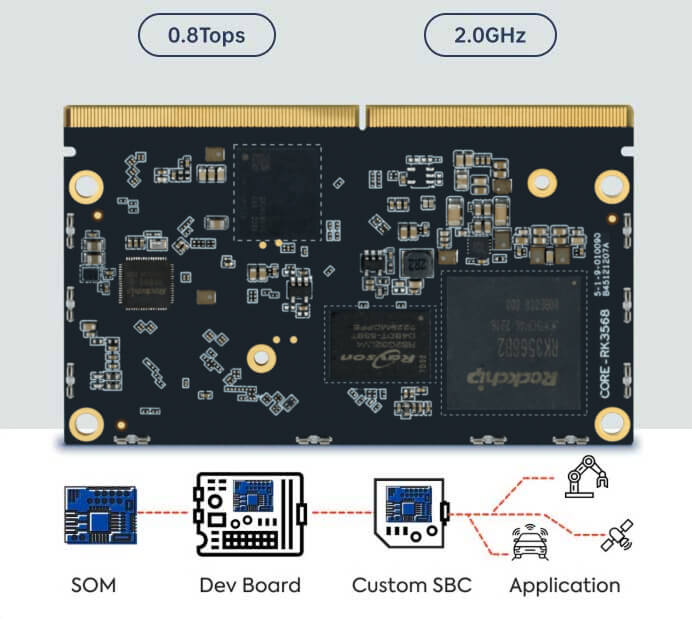
So you’ll most likely need additional wireless modules like LoRaWAN, ZigBee, Z-wave to expand the capabilities of the SOM.
The beauty with these modules is that they enable you to sort of build your gateway from scratch.
For instance, if you are a hardware designer, instead of going through the process of developing the entire IoT gateway circuit from scratch, you can incorporate an SoM then add the required wireless modules for your IoT system. This option also saves you the lead time from your PCB manufacturer and assembler.
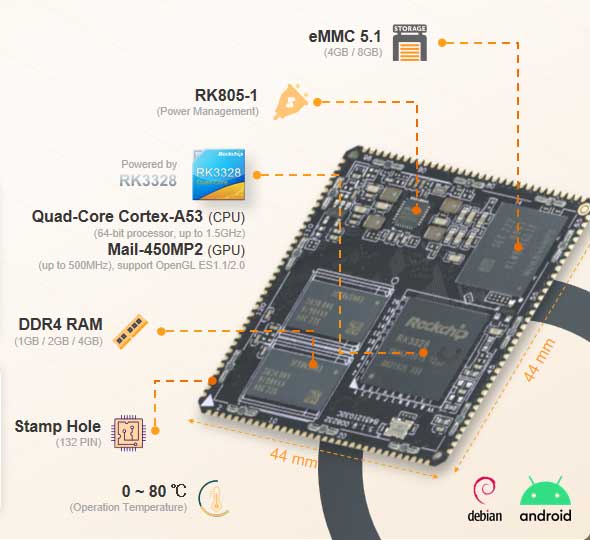
Programmable Gateway Hardware
These programmable gateways closely border the option of buying a complete gateway solution, but you still have to build the device, albeit on the software side. Programmable gateways significantly reduce the time-to-market and are more powerful than SBCs because they are purposely built for this application.
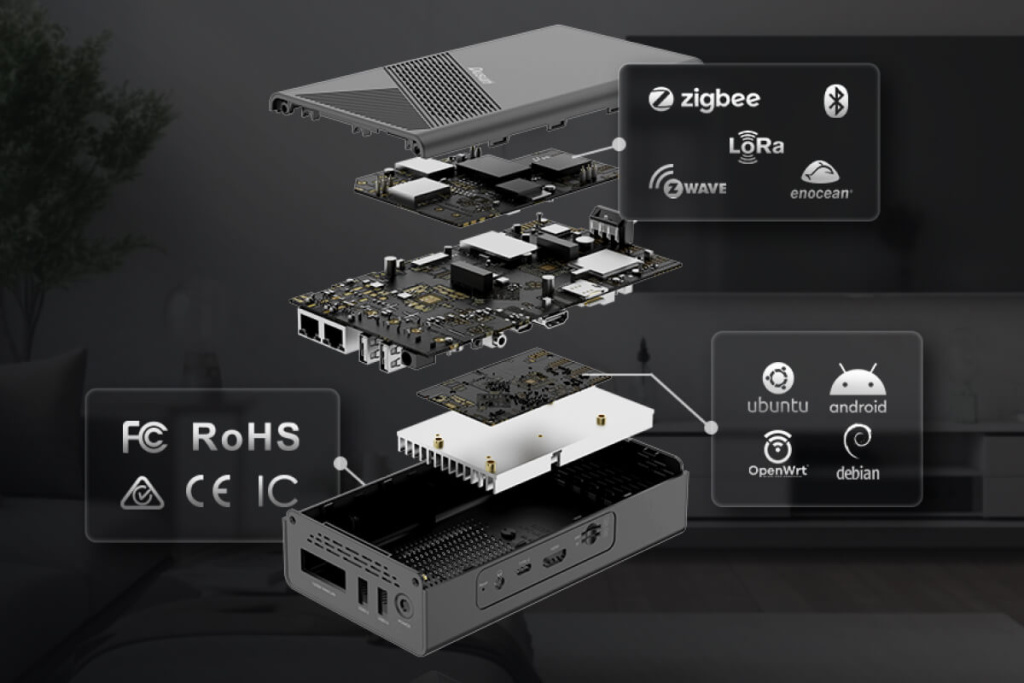
But they can be expensive and if you are a hardware person, this option won’t give you the satisfaction of building your own, personalized IoT gateway solution.
My Favorite Way of Building an IoT Gateway
I’m enthusiastic about computer hardware, so I prefer the SOMs with wireless modules option. It is equivalent to building the circuit from scratch with a significantly shorter lead time. The Dusun Pi option is a close second.
Best IoT Gateway Reference Design
If you’re building an IoT gateway, here is a reference design diagram you can use for the circuit.
The board can have other components like LED indicators, hardware and software reset buttons, USB 2.0 ports, USB type-C (for OTG), and HDMI ports for audio and video connection to a monitor. If your gateway requires a battery for off-grid applications, include its connection in the circuit.
But the core of the gateway is the RISC processor, which can be RISC-V, ARM, or MIPS-based. Typical manufacturers for these processors are MediaTek, NXP, and Rockchip.
The other critical components are the wireless modules, which I’ve placed under one node in the diagram. You can include as many as you want using SPI and UART or I2C connections to the processor, but the LTE module requires an UART link (Tx and Rx), while the WiFi module requires PCIe. These are separate in the diagram to highlight their connections to the processor.
Buy or Build IoT Gateways?
The decision to buy or build an IoT gateway ultimately boils down to your skills as an IoT developer. If you are proficient in hardware design, you can build the device from scratch (beginning with PCB design), use wireless modules attached to an SoM, or use a single-board computer.
Businesses wanting to sell IoT solutions can engage in a B2B set up with the manufacturer to get these customized pieces of hardware built and resell to their customers.
But if you’re not good at designing and soldering hardware, you can buy a programmable gateway. Technically, this option does not involve building a gateway, but the definition of an IoT gateway is a physical device or virtual platform that links sensors, smart devices, and modules to the cloud.
Therefore, developing the IoT software or applications is also part of the building process. If you are a software developer, you can buy a programmable IoT gateway and customize the applications for your project or your customers. This option reduces the time-to-market by a significant margin but can cost you in the profit margins when reselling.
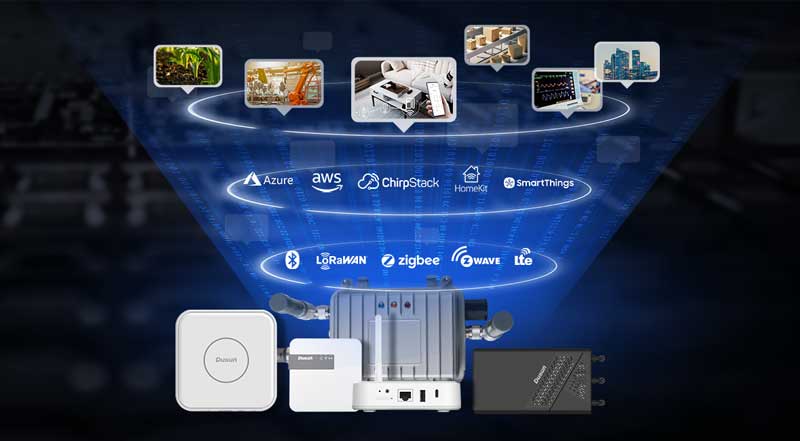
The last option is to buy a complete IoT gateway with the OS and applications installed. Although you might not get to customize this device, you can plug and play it right into your business and get started right away.
This option is handy if you don’t have hardware or programming skills and want to set up an IoT system quickly, mostly for your business, not to sell the customized technology.
Final Word
I hope you found this article insightful and can use either of the development kits listed above to build your IoT gateway. It is important to note that these methods are ideal for those who want to build gateways for their businesses or to customize the product for their clients.
That’s it for now! If you have other development kits you’d like to share, please let us know in the comments below. And if you like the article, please share it to reach more IoT developers out there. Cheers!


















